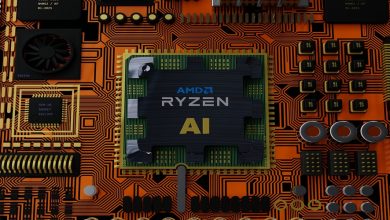Technical Support and Maintenance Jobs

The need for reliable technical support and maintenance services has never been more critical. Businesses, regardless of their size, depend on the smooth functioning of their technological infrastructure. This infrastructure, which includes hardware, software, and network systems, forms the backbone of their operations. When issues arise, they can disrupt productivity, lead to data loss, and result in significant financial losses. That’s where technical support and maintenance professionals come in, playing an indispensable role in keeping businesses running smoothly.
Understanding Technical Support
What is Technical Support?
Technical support is a service provided by skilled professionals who assist users in resolving various technical issues. These issues can range from simple software malfunctions to complex hardware failures. The primary goal of technical support is to ensure that users can effectively use their technology without experiencing significant disruptions.
Levels of Technical Support
Technical support is typically divided into different levels or tiers, each designed to address varying degrees of technical complexity:
Tier 1 (Basic Support):
This is the first point of contact for users experiencing technical issues. Tier 1 support professionals handle basic troubleshooting tasks, such as password resets, software installations, and general inquiries. They are responsible for gathering information and determining whether the issue requires escalation to a higher tier.
Tier 2 (Intermediate Support):
When an issue cannot be resolved at the Tier 1 level, it is escalated to Tier 2. These professionals have a deeper understanding of the technology and can handle more complex problems. They may be required to diagnose and fix software bugs, hardware malfunctions, or network connectivity issues.
Tier 3 (Advanced Support):
Tier 3 support is the highest level of technical support. It is reserved for the most complex and challenging issues. Professionals at this level often have specialized expertise in specific technologies or systems. They may work closely with developers or engineers to resolve critical problems that affect the overall functionality of a system.
Key Responsibilities of Technical Support Professionals
Technical support professionals perform a wide range of tasks to ensure that users have a seamless experience with their technology. Some of their key responsibilities include:
Troubleshooting:
Identifying and resolving technical issues promptly is at the core of a technical support professional’s role. This requires a strong understanding of various technologies and the ability to think critically to diagnose problems effectively.
Customer Service:
Providing excellent customer service is essential in technical support. Professionals must communicate clearly and empathetically with users, ensuring that they understand the issue and the steps being taken to resolve it.
Documentation:
Accurate documentation of technical issues and resolutions is crucial for future reference. This helps in identifying recurring problems and developing more effective solutions.
Training and Education:
Technical support professionals often provide training to users on how to use software, hardware, or systems effectively. This proactive approach can prevent future issues and improve overall user satisfaction.
Exploring Maintenance Jobs
What is Maintenance in the Context of Technology?
Maintenance in the technology sector refers to the ongoing efforts to keep systems, software, and hardware in optimal condition. It involves routine checks, updates, and repairs to prevent issues before they occur and to ensure that everything functions smoothly. Maintenance is a critical aspect of IT management, as it helps to extend the lifespan of technology assets and minimize downtime.
Types of Maintenance Jobs
There are several types of maintenance jobs within the technology sector, each with its specific focus:
Preventive Maintenance:
This involves regularly scheduled tasks aimed at preventing potential problems. Examples include software updates, hardware inspections, and system backups. The goal is to identify and address issues before they lead to significant disruptions.
Corrective Maintenance:
When a system or piece of equipment fails, corrective maintenance is performed to fix the issue. This type of maintenance is reactive and is typically carried out after a problem has been identified. Corrective maintenance may involve replacing faulty components, repairing damaged software, or restoring lost data.
Predictive Maintenance:
This type of maintenance uses data analysis and monitoring tools to predict when a system or component is likely to fail. By addressing potential issues before they occur, predictive maintenance helps to reduce downtime and increase the efficiency of IT operations.
Emergency Maintenance:
Sometimes, unforeseen events such as natural disasters, cyberattacks, or hardware failures can lead to sudden and severe technical issues. Emergency maintenance is carried out to address these critical problems immediately, ensuring that the system is restored to normal operation as quickly as possible.
Key Responsibilities of Maintenance Professionals
Maintenance professionals play a vital role in ensuring the reliability and longevity of technology assets. Their responsibilities include:
System Monitoring:
Regular monitoring of systems to detect any signs of potential issues is a key responsibility. This involves using specialized software and tools to track performance metrics, identify anomalies, and take corrective action when necessary.
Hardware and Software Updates:
Keeping hardware and software up to date is essential to prevent security vulnerabilities and ensure compatibility with other systems. Maintenance professionals are responsible for installing updates, patches, and upgrades as needed.
Data Backup and Recovery:
Protecting data is a top priority in maintenance jobs. Regular backups and disaster recovery plans are essential to ensure that data can be restored in the event of a system failure or cyberattack.
System Optimization:
Maintenance professionals work to optimize system performance by identifying and eliminating bottlenecks, reducing resource consumption, and improving overall efficiency.
The Growing Demand for Technical Support and Maintenance Jobs
Why Are These Jobs in High Demand?
The demand for technical support and maintenance jobs has been steadily increasing in recent years. Several factors contribute to this growing demand:
Advancement of Technology:
As technology continues to evolve rapidly, businesses are adopting more sophisticated systems and software. With this increased complexity comes a greater need for technical support and maintenance services to ensure that everything functions smoothly.
Cybersecurity Threats:
The rise in cyberattacks and data breaches has highlighted the importance of robust maintenance practices. Businesses need professionals who can implement security measures, monitor for threats, and respond quickly to incidents.
Remote Work:
The shift to remote work, accelerated by the COVID-19 pandemic, has created new challenges for IT teams. With employees working from various locations, the need for reliable technical support and maintenance has become even more critical.
Regulatory Compliance:
Many industries are subject to strict regulations regarding data protection and IT security. Compliance with these regulations requires regular maintenance and support to ensure that systems meet the necessary standards.
Career Opportunities and Growth Prospects
For those interested in pursuing a career in technical support and maintenance, the future looks promising. The demand for these professionals is expected to continue growing, creating a wealth of job opportunities across various industries.
Some of the key career paths in this field include:
Technical Support Specialist:
These professionals provide direct support to users, helping them resolve technical issues and ensuring that their technology functions as expected. They may work in-house for a company or as part of a managed services provider.
IT Maintenance Technician:
Maintenance technicians are responsible for the upkeep of hardware, software, and network systems. They perform routine checks, repairs, and updates to keep everything running smoothly.
Network Administrator:
Network administrators manage and maintain an organization’s network infrastructure. They ensure that all network components are functioning correctly, perform regular maintenance, and address any issues that arise.
Cybersecurity Analyst:
With the increasing threat of cyberattacks, cybersecurity analysts play a crucial role in protecting an organization’s digital assets. They monitor for threats, implement security measures, and respond to security incidents.
Systems Administrator:
Systems administrators oversee the operation and maintenance of an organization’s IT systems. They are responsible for ensuring that all systems are up to date, secure, and functioning optimally.
Conclusion
Technical support and maintenance jobs are vital to the smooth operation of businesses in today’s technology-driven world. These professionals ensure that systems, software, and hardware remain functional, secure, and efficient. As technology continues to advance, the demand for skilled technical support and maintenance professionals will only increase. For those looking to enter this field, the opportunities are vast and the potential for career growth is significant. Whether you’re interested in providing direct user support, maintaining IT infrastructure, or ensuring cybersecurity, a career in technical support and maintenance offers a rewarding and dynamic path.





